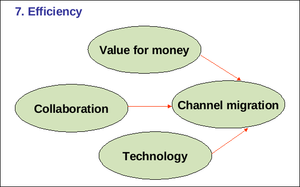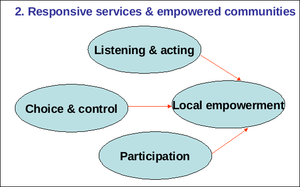Uses of Web 2.0 in e-government
From E-Consultation Guide
In her paper at EGOV07, Sarah Fogden of the UK Cabinet Office laid out the two main drivers of transformational government, from the local government white paper. It must be an efficient way of delivering what people and communities want. The Cabinet Office is developing performance targets for customer satisfaction.
So when looking to use Web 2.0 to improve government, there are potential efficiency games, but even more opportunities to respond to citizens and empower their communities.
Internal knowledge management
- Communities of practice, bringing together people faced with the same problems
- E.g. Dutch police in different forces discuss how to close down a cannabis farm
- Technologies: information exchange over e-mail lists, discussion forums, chat systems, ...
Inter-organisational joint projects
- Collaborative work, including project planning, budgeting, joint report writing
- E.g. when setting up shared services
- Technologies: collaborative writing using Lotus Notes or wikiwiki software, CRM and project management portals, Google spreadsheets, version control software (cf. services for software developers at Sourceforge).
Engaging with stakeholders
- Complaints and compliments
- public consultations
- supporting the work of councillors and assembly members
- e.g. councillors blogs
- e.g. Irish Parliament's pilot e-consultation on the Broadcasting Bill
- neighbourhood forums, planning circles, ...
- I.e. every time when government learns from people outside government (-> organisational learning)
- Technologies: see technology classification

